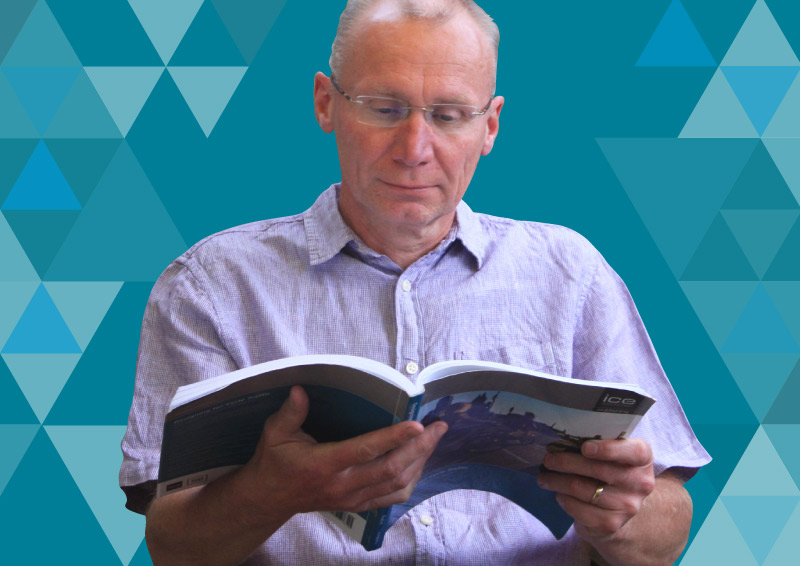John Parkin, author of Designing for Cycle Traffic: International principles and practice, on why he chose to become a civil engineer, what it takes to write a book and more!

- Updated: 14 Oct 2020
- Author: John Parkin, Professor of Transport Engineering, Deputy Director Centre for Transport and Society, UK
What inspired you to work in civil engineering?
I was always interested in transport, having been a bus spotter as a young adult, and also the author of a letter to the Leicester Mercury on why cycle commuting was a beneficial form of transport. With a civil engineer father, and a bias to physics and maths, civil engineering was the obvious routeway to a career in transport.
What does writing a book entail?
Firstly, there is a need for a slowly dawning realisation that you are in a position where your background knowledge and your ability to write (hopefully fairly clearly and concisely!) suggests to you that you, in fact, have a duty to your profession to share what you know. Once you have decided to write the book, it is then ‘just’ sheer determination to keep sitting down to write. I had the benefit of damaging my knee running, which meant I had to sit and rest it as much as possible, so it became obvious what my weekends from September to December 2017 were to entail!
What is the best part of writing a book?
I really valued the discussions I had with the people who were kind enough to review each chapter for me. They read it in detail and pulled no punches. As an author you have to take every comment a reviewer makes seriously. I also learned a lot through the wider systematic reading I had to do, and through the comments the reviewers made. I had a very clear idea about the portfolio of photographs I needed for illustration. This allowed my wife and I to have holidays with purpose riding around The Netherlands and the UK on our semi-recumbent tandem.
And the worst…? What was the biggest challenge you faced?
I think the biggest challenge is the amount of time you have to set aside, and it is the opportunity cost of that time: I could have arguably done many other more interesting things with my time!
What will the reader learn from Designing for Cycle Traffic: International principles and practice?
Cities were comprehensively re-engineered from the 1960s onwards for car traffic. I hope that the reader will realise that cities now need to be planned and re-engineered again, to accommodate cycle traffic. This will make cities more efficient, less energy consuming and greenhouse gas emitting, cleaner, healthier and safer.
How do you take your tea?
I drink herbal teas, my favourite being raspberry leaf tea.
If you could invite any engineer (alive or dead) to dinner, who would it be?
Hmm, good question. I might cheat and go for a scientist: Michael Faraday, who became the Director of the Laboratory of the Royal Institution. He was unassuming and forever seemed to be in the shadow of Sir Humphrey Davy. He gave the first series of Christmas lectures to young people that are still going today. So is legacy is two-fold: his discoveries and inventions, and his method of educating young people.
Learn more about the principles and practices for designing for cycle traffic when you refer to Designing for Cycle Traffic: International principles and practice available in both print and online.
Planning to write a book? Find out why ICE Publishing should be your publisher. To help you we have prepared tips and advice for book authors at all stages.
